You have probably heard of cryptocurrencies like Bitcoin, Ripple, Ethereum, LiteCoin, Peercoin, Dash, Monero and many more. This world of exchanges, wallets, ledgers and blockchains may seem quite intimidating. A question by a colleague on how to get started with Bitcoins, inspired me to write this blog post.
This article provides a step-by-step guide to obtaining your first cryptocurrency.
Scope and disclaimer
In an attempt to scope the wide question on 'how to get started', this article will not describe what cryptocurrency is, why you should use Bitcoins or how they are mined.
Rather I will focus on how to get your first Bitcoins (or any other cryptocurrency) and keep them on your exchange wallet. Creating a wallet of your own is a topic by itself and is something I leave for a followup blog post.
Never invest money you can't afford to lose, spend your money wisely. This is a tutorial on how to do get started, not a recommendation to invest.
Contents
- 1. What you need to know
- 2. Which exchange should I use?
- 3. Setting up your Kraken account
- 4. Securing your account
- 5. Get verified
- 6. Transfer EUR to your wallet
- 7. Obtaining Bitcoins
- 8. Show me the money!
1. What you need to know
In this chapter I will use the word 'Bitcoin', but the principles work for all cryptocurrencies.
Bitcoin lets you exchange money in a different way than with regular banks. Take your time time to inform yourself before using Bitcoin for any serious transaction. Bitcoin should be treated with the same care as your regular wallet!
Secure your wallet
Like in the physical world, your wallet must be secured. Bitcoin makes it possible to transfer value anywhere in a very easy way and it allows you to be in control of your money. Such features also come with great security concerns. At the same time, Bitcoin can provide very high levels of security if used correctly. Always remember that it is your responsibility to adopt good practices in order to protect your money. Read more about securing your wallet.
Prices are volatile
The price of a Bitcoin can unpredictably fluctuate over a short period of time due to its young economy, novel nature, and sometimes illiquid markets. This means that keeping your savings in Bitcoins is not recommended at this time. Bitcoin should be seen like a high risk asset; never store money that you cannot afford to lose with Bitcoin.
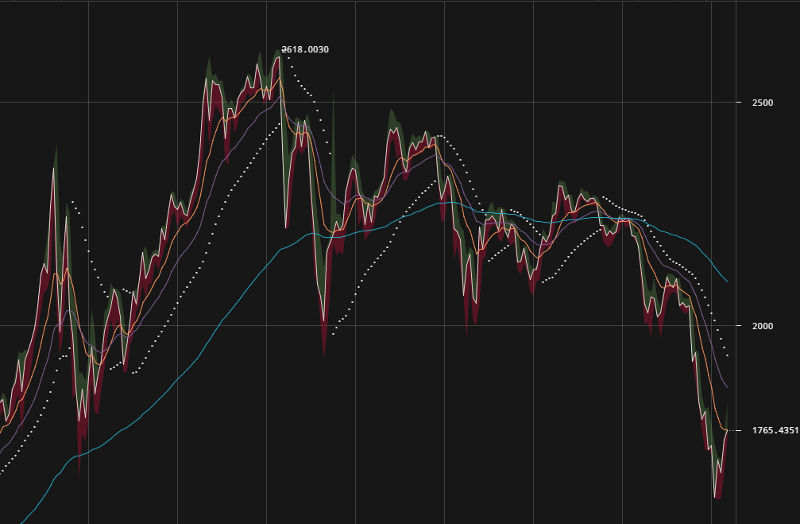
Payments are irreversible
Transactions issued with Bitcoin cannot be reversed, they can only be refunded by the person receiving the funds. That means you should take care to do business with people and organizations you know and trust, or who have an established reputation. For their part, businesses need to keep control of the payment requests they are displaying to their customers. Bitcoin can detect typos and usually will not let you send money to an invalid address by mistake.
Bitcoin is not anonymous
In order to protect your privacy with Bitcoin, some effort is required. All Bitcoin transactions are stored publicly and permanently on the network, which means anyone can see the balance and transactions of any Bitcoin address. However, the identity of the user behind an address remains unknown until information is revealed during a purchase or in other circumstances. This is one reason why Bitcoin addresses should only be used once. Read more about protecting your privacy.
Unconfirmed transactions aren't secure
Transactions don't start out as irreversible. Instead, they get a confirmation score that indicates how hard it is to reverse them (see table below). Each confirmation takes between a few seconds and 90 minutes, with 10 minutes being the average. If the transaction pays too low a fee or is otherwise atypical, getting the first confirmation can take much longer.
Confirmations Reliability
0 Only safe if you trust the person paying you
1 Somewhat reliable
3 Mostly reliable
6 Minimum recommendation for high-value bitcoin transfers
30 Recommendation during emergencies to allow human intervention
Now we have this out of our way, lets start!
2. Which exchange should I use?
An exchange is a place to buy cryptocurrency in exchange for other currencies. There are many exchanges and choosing which one to use requires a little investigation. For me security, reliability and size are big requirements and after some research, I ended up with choosing between Poloniex and Kraken.
One big difference between those two exchanges, is that Kraken accepts Euro's and Poloniex only uses USD. As a European, Kraken was the way to go and this is the exchange I will use to describe the process for obtaining Bitcoins. The high-level process will be quite similar for other exchanges.
3. Setting up your Kraken account
Navigate to Kraken.com and you will see the welcome screen where you can signup for an account. When you do so, make sure you choose a strong password!
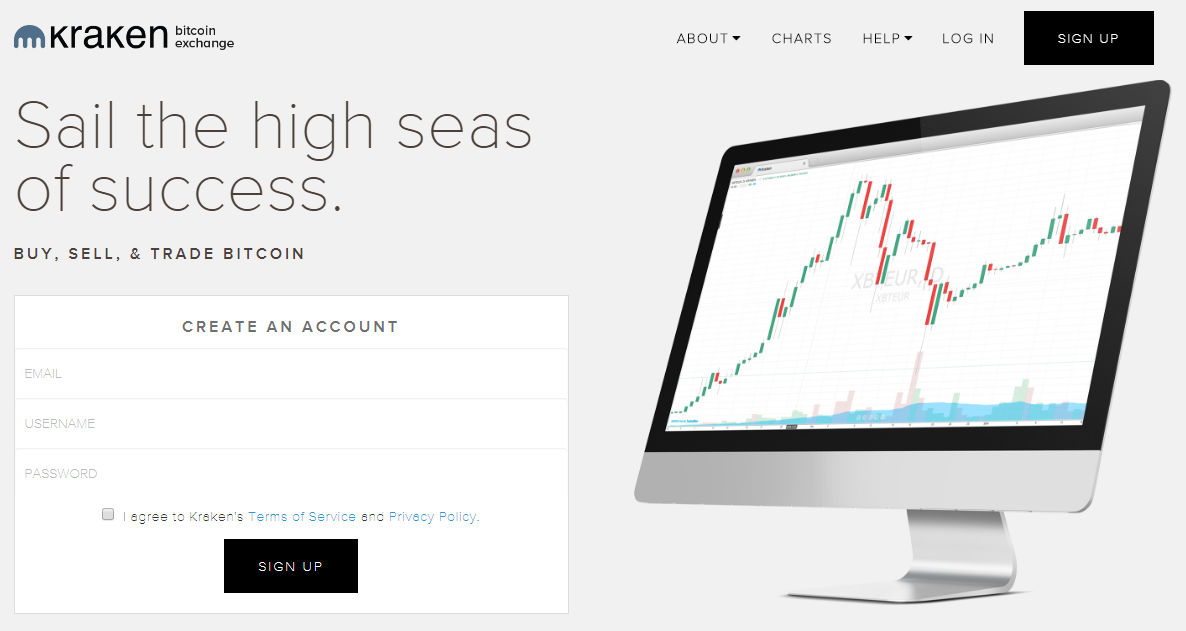
As soon as you setup your account, you will be greeted by Kraken's starting dashboard. Mine looks like this (parts blurred for obvious reasons ;))
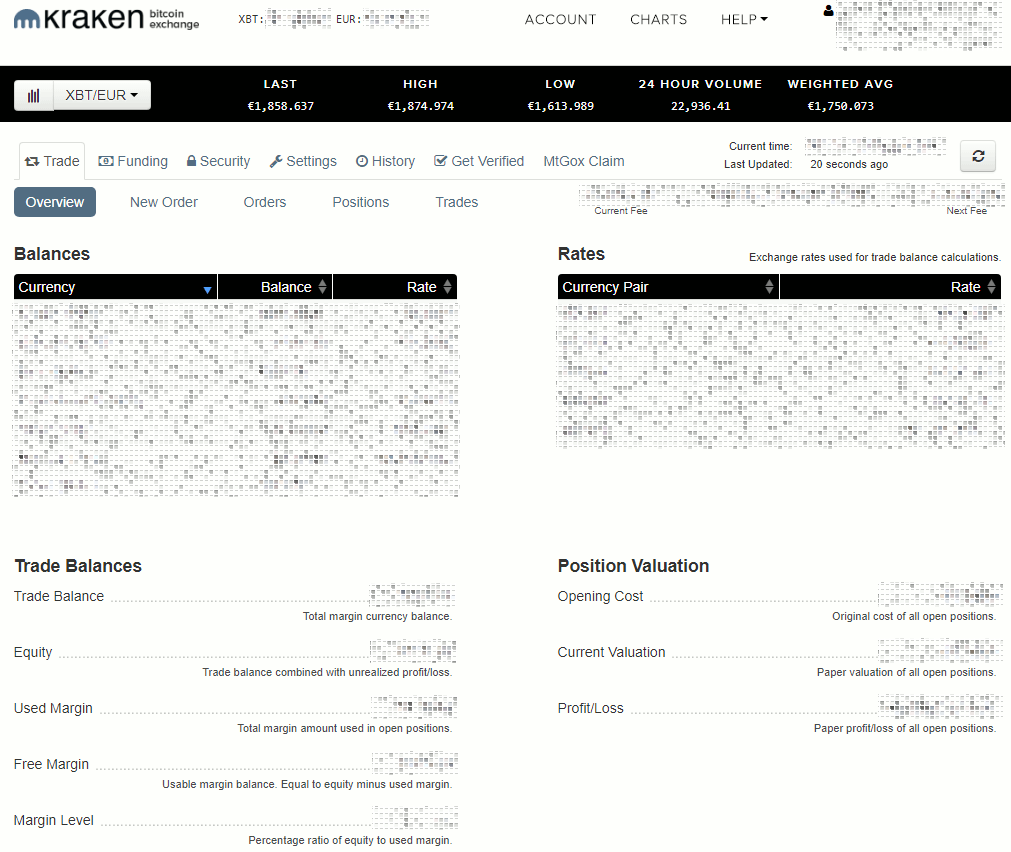
4. Securing your account
After setting up your account, I recommend enabling two-factor authentication (2FA) for your account and/or actions to increase your account security. To achieve this, go to your Kraken dashboard and navigate to 'Security' - 'Two-Factor authentication'.
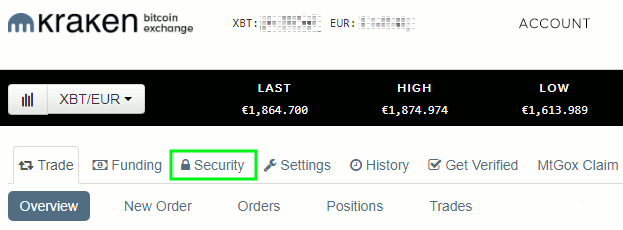
This page will enable you to secure your account in four ways:
Account login - 2FA when you login to your account.
Trading - 2FA when placing, closing, and canceling orders.
Funding - 2FA for deposits and withdrawals.
Master key - Setup a master key to enable password recovery and two-factor authentication bypass.
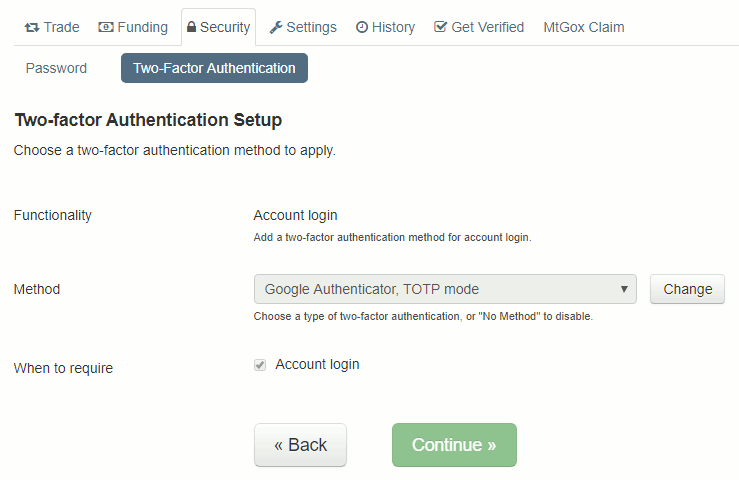
5. Get verified
Most exchanges will enforce a verification process. This is done in order to meet KYC (Know your Customer) and AML (Anti-Money Laundering) requirements.
Verification tiers
Usually the verification is split up in multiple steps so you don't have to give your personal information at once. These steps are linked to tier levels of funding limits, each with increasing amounts of deposit/withdraw limits.
For Kraken, the first 4 tiers are as follows:
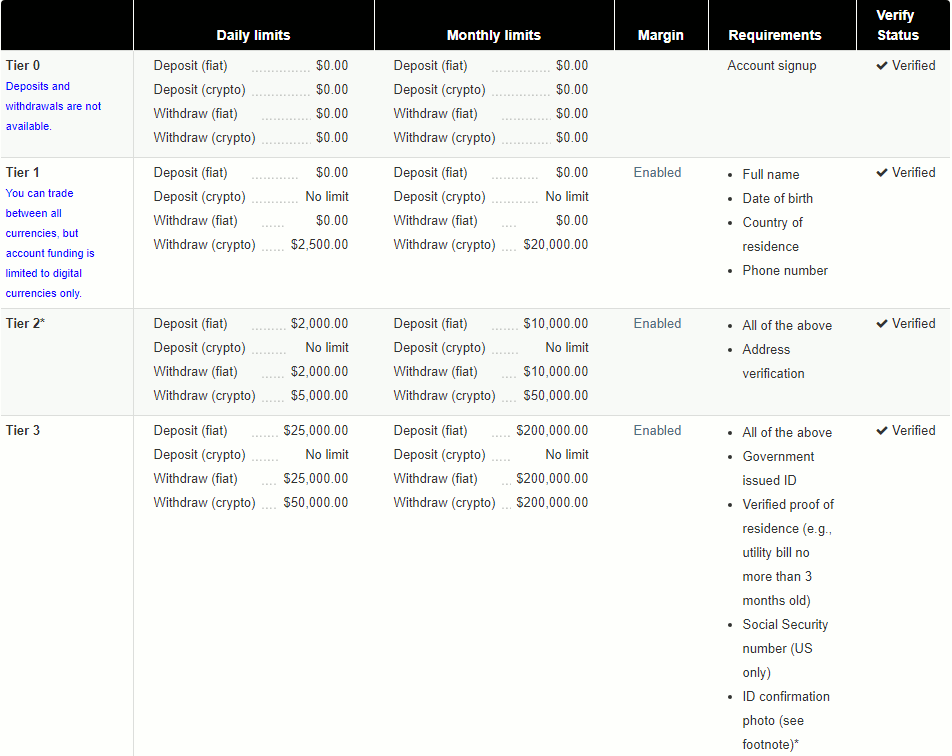
The table above shows that in order to deposit or withdraw non-digital currency (EUR/USD) to the Kraken exchange (Tier 2), you will need to provide the following information:
- Full name (T1)
- Date of birth (T1)
- Country of residence (T1)
- Phone number (T1)
- Address verification (T2)
Verify your Kraken account
To verify your account, go to 'Get verified' on the Kraken dashboard.
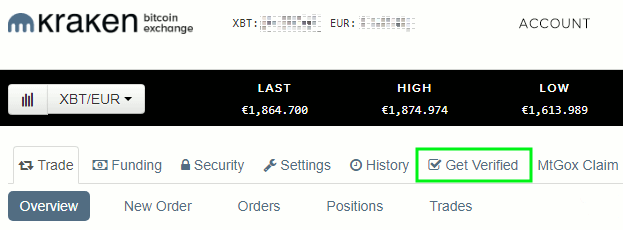
On this page you can find which tier is enabled for you. After creating your account you will be placed in tier 0 by default.
Scroll all the way down and fill in the forms in the tabs corresponding to the tier you want to get verified and submit the information. That's it!
Note that the verification process may take from a few hours up to a few days for the higher tiers. Getting Tier 2 verified took 3 days for me, while my Tier 3 verification process took around 2 weeks.
Important!
As stated above, you will not be able to start exchanging Euro's for cryptocurrency until you get verified to Tier 2.
6. Transfer EUR to your wallet
As soon as you're Tier 2 verified, it's time to get some Euro's in your account. In your Kraken dashboard, go to the 'Funding' page.
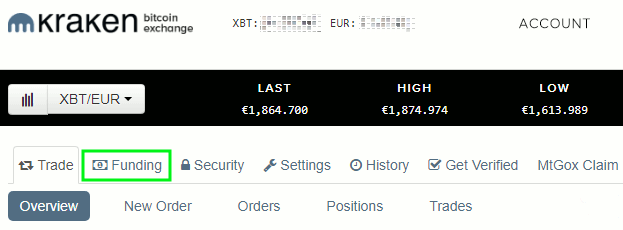
On this page you will see a list of all cryptocurrencies supported by the Kraken exchange. Right now we want to deposit Euro's to your account, so click 'Deposit' - 'Euro (EUR)'. You will end up on this page:
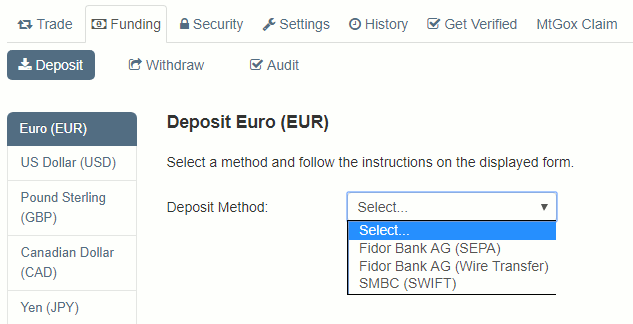
Here you will need to choose a deposit method from a dropdown list. I'm from The Netherlands and I have good experience with SEPA, so I used the top option 'Fidor Bank AG (SEPA)'.
This will display the instructions for the selected method. Basically, it is an international bank transfer and if you're unsure how to make international transfers, contact your bank for more information.
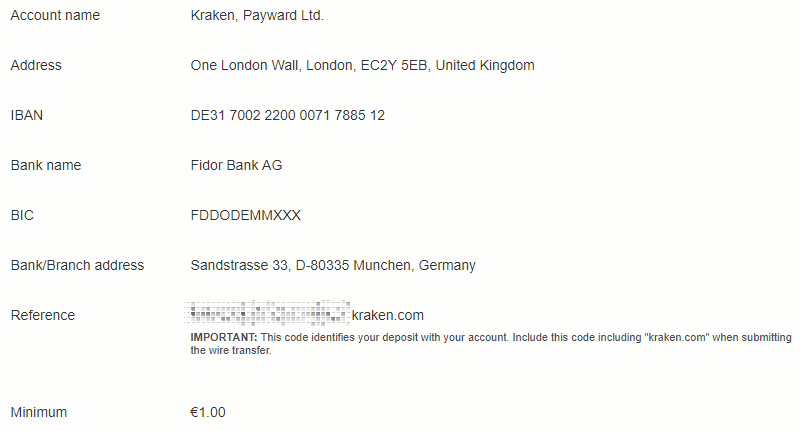
What is really important in this step, is to include the full code ending with 'kraken.com' (format XXXX XXXX XXXX XXXX kraken.com) when submitting the transfer from your bank. In my case, I entered the code in the description field of my bank transfer.
International bank transfers may take a day or two to get processed, but are usually finished the next working day.
7. Obtaining Bitcoins
As soon as you have Euro's available on the exchange, you can start trading them for cryptocurrency. In this example I use Bitcoin, but the same principle goes for other cryptocurrencies as well.
In the dashboard, go to the 'Trade'-tab. This the default page when you login. Next click the 'New Order' button.
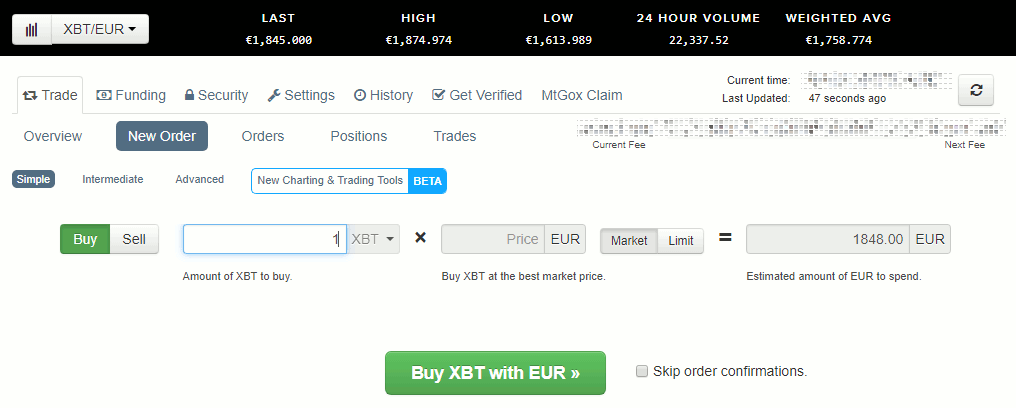
Note the XBT/EUR dropdown list in the top-left corner of the screenshot above. This displays the currencies used for the trade. So, when XBT/EUR (XBT = Bitcoin, EUR = Euro) is selected, Bitcoins can be exchanged for Euro's or vice versa. Similarly, when XRP/XBT is selected, Ripples (XRP) and Bitcoins (XBT) can be exchanged.
When buying, you have 2 options:
- Market will buy the selected amount of Bitcoins for the current market price.
- Limit will buy the selected amount of Bitcoins at a fixed price (or better). More info on limits can be read here
In the picture above, I chose to buy 1 XBT for the current Market price, but note that you can also buy parts of a Bitcoin by entering a real number (like 0.42).
Click the 'Buy XBT with EUR' button. This will show a summary of the order details. Press 'Submit order' to confirm. This will bring up the following page showing the order is successful with the process of the order in the bottom.
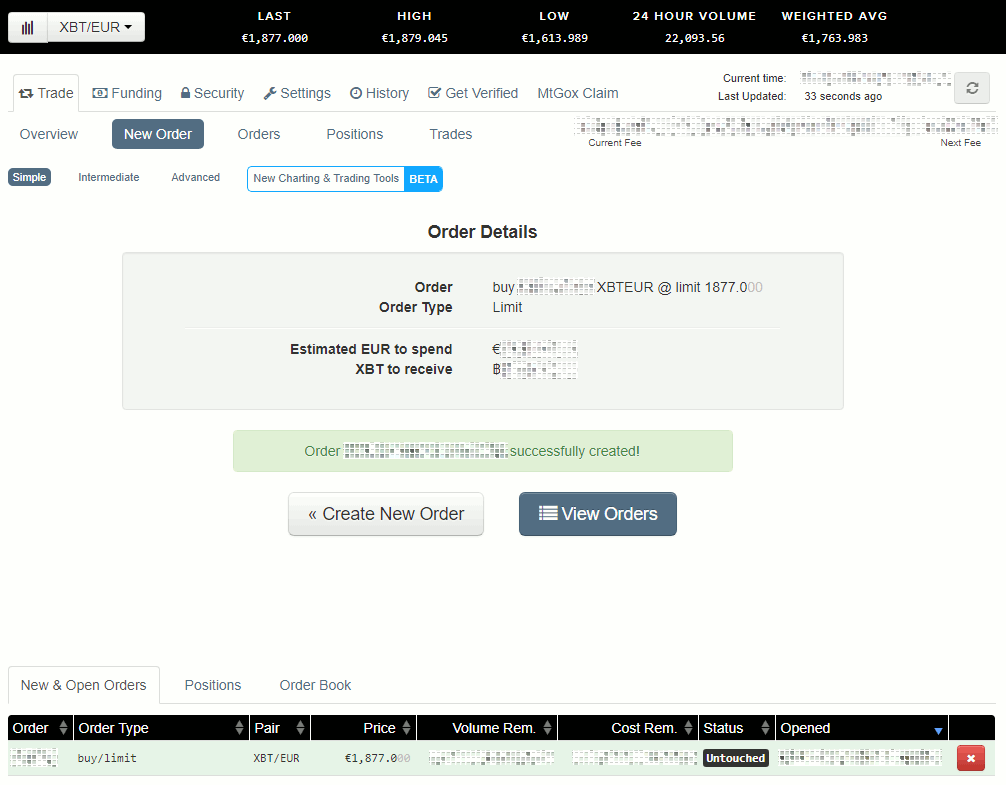
Processing an order usually takes a few seconds. After your order was processed, it will disappear from the 'New & Open Orders' tab.
Congratulations, you are now the proud owner of a Bitcoin (or part of it)!
8. Show me the money!
Now you have bought your first Bitcoin, where can you see the amount and the value of it?
In the Kraken dashboard, go to the 'Trade'-tab and click 'Overview'. The Balances-table you see on this page, will show you the assets and their value based on the current market price. You can use your currency to buy new ones or transfer them to other bitcoin addresses.
Note that the assets in your Balances overview are in the wallet that is managed by the Kraken exchange. It is considered a good practice to open a wallet of your own when you're done trading on an exchange, in order to have full control over your Bitcoins. As said before, creating your own wallet to keep it safe on a USB-stick, paper or your own desktop is out of scope for now and will be covered in a later blog post.
In the 'Funding'-tab click 'Deposit'. This is where you can find or generate deposit addresses for the currencies accepted by Kraken. If you ever want to receive cryptocurrency from another source, you can use these addresses for the transaction.
Find and click 'Bitcoin (XBT)' in this list. All the way down you can find the deposit address that has been made for your transaction. Note that these addresses can expire if you make more than 5 addresses.
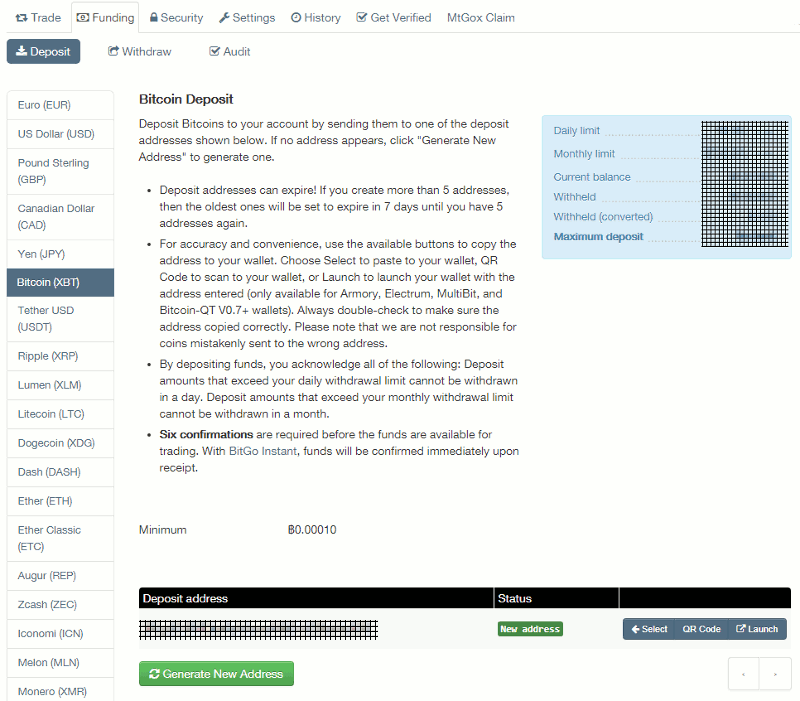
I hope this article got you up-and-running in the world of cryptocurrency. It may seem intimidating at first, but as soon as you get your first coins, things start to fall in place. These is much to write about this topic so keep an eye on my website for later posts.
